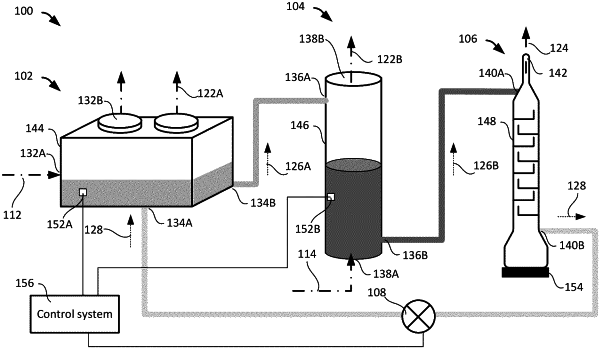| CPC B01D 53/1493 (2013.01) [B01D 53/1406 (2013.01); B01D 53/1412 (2013.01); B01D 53/1425 (2013.01); B01D 53/1475 (2013.01); B01D 53/185 (2013.01); B01D 53/62 (2013.01); B01D 53/78 (2013.01); B01D 2251/60 (2013.01); B01D 2251/80 (2013.01); B01D 2252/204 (2013.01); B01D 2252/20494 (2013.01); B01D 2252/504 (2013.01); B01D 2252/602 (2013.01); B01D 2257/504 (2013.01); B01D 2258/0283 (2013.01)] | 20 Claims |

|
1. A method to remove carbon dioxide (CO2) gas from a first gaseous feed and a second gaseous feed, the method comprising:
wetting a gas-liquid contactor with an alkaline capture solution;
receiving the first gaseous feed from a first source, the first gaseous feed comprising CO2;
directing a first flow from the first gaseous feed to interact with the alkaline capture solution in the gas-liquid contactor, wherein directing the first flow causes a first portion of CO2 from the first gaseous feed to dissolve into the alkaline capture solution forming a first CO2-rich alkaline capture solution;
receiving the second gaseous feed from a second, distinct source, the second gaseous feed comprising CO2;
directing a second flow from the second gaseous feed to interact with the first CO2-rich alkaline capture solution, wherein the second flow is independent of the first gaseous feed, and directing the second flow causes a second portion of CO2 from the second gaseous feed to dissolve into the first CO2-rich alkaline capture solution forming a second CO2-rich alkaline capture solution, and a concentration of CO2 in the second CO2-rich alkaline capture solution is higher than a concentration of CO2 in the first CO2-rich alkaline capture solution; and
separating a third portion of CO2 from the second CO2-rich alkaline capture solution.
|